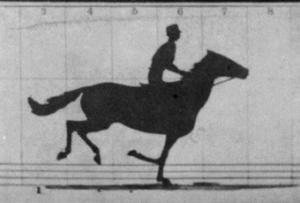Time is an intriguing concept, isn’t it? We could summarize our own existence in terms of seconds, but there is so much more happening in shorter periods of time, and that’s the main objective of my project. We care about “picoseconds”, an incredibly small subdivision of the second. To help putting things into perspective, there are as many picoseconds in a second as seconds are in THIRTY ONE THOUSAND AND SEVEN HUNDRED years. Yeah, that´s right.
But what the hell happens during that time? Well, electrons happen. The guys responsible for driving our whole world as we know it today happen to have an incredibly rich and strange behaviour when you look down to those time scales. Yeah, we will never notice it in our daily life, but we should care a bit for the little guys, right?
Electrons, however, are in every material we use, because every material is made of atoms, so we must narrow down our research if we want to get somewhere. Hence, we chose to investigate a new type of materials that are now gathering a lot of attention, the so-called “2D materials”. The reason they are nowadays the focus on many research institutes is their strange properties. It was, at first, impossible for these materials to exist, and then these guys Novoselov and Geim extracted a 2-dimensional sheet (of one atom thickness) of carbon, the so-called Graphene. Then, many physical phenomena were not believed to exist in these materials, and everyday a group appears and demonstrates that it is, indeed, possible to make it happen. It’s a challenging, very difficult but rewarding field of study. If you think about it, painters required many, many years to be able to paint with perspective and depth (An Egyptian painting and a Da Vinci one is the perfect example). In a 3D sculpture, depth is just natural: you literally have it right there. Researching 2D Materials – from the 3D ones – is something like that. (With this paragraph, an art expert just died).

So far, everything I said was a lie. Our true objective is to provide the right tools to go down to the shortest timescales. We can actually research any type of materials, but the 2D ones provided the right environment to make the bad art example, that – still – sounds pretty damn good in my head. (Also, my MSc thesis will be in 2D materials, so it´s also a good chance to make some advertising of how cool this is).
So, anyways, let´s bring the big guns. In my group we have a one-of-a-kind apparatus, that will measure the behaviour of the electrons with a picosecond resolution. How? We use the “pump-probe” approach. First, we will excite our sample. We will Pump It (like that song of The Black Eyed Peas) with a laser and the electrons will react accordingly. Then, we will Probe It, with X-Rays (although in different labs they can use another laser, or many different types of probes). The X-rays will subsequently extract some of the previously laser-excited electrons, and these little guys will impact a screen and we will record the energy with which they impacted it. Our super cool apparatus can ALSO say, how long did it take for the electron to travel from our sample to our detector and in which exact angle (direction) this came from. This is one-of-a-kind. Gathering all this information will allow us to extract a lot of useful information, of our let´s say, 2D material.
To make truly a map of the time evolution of our system, we need to Pump and Probe our system repeatedly but changing slightly the difference between the pump and the probe. It´s exactly like making a Stop Motion movie of our system. The difference between the frames is then, as promised, of picoseconds.

A very beautiful contradiction of all this project, is how long the experiment might take. This experience at the HZB not only taught the technical details and physical principles of this type of measurement, but also has taught how difficult a scientific career can be. One week we had to produce good results. At first, I thought “How ridiculous, it´s too much”. We had 24h shifts, and we used half of the time focusing the laser or solving any other technical problem, and there´s ALWAYS one. Measurements could take even 10 hours, if we wanted to have decent results. We would stay until midnight, let the machine run and come back the next day at 10 am just to find out that we had made a very stupid mistake in the code and the measurement was ruined. It really helps you to put your feet on the ground and to face a scientific career with much more patience and personality.
Here’s the song of The Black Eyed Peas (Youtube) just for fun, in case you haven’t heard it:

What an amazing project! The explanation was very clear. Thank you for sharing your knowledge. Keep breaking your leg! <3
🙂
It´s very interesting to break down the concept of time and the way that physicists, and surely many other scientists, are concerned with looking for new materials that will surely be useful for humanity.
Interesting the message about mysticism and the patience that a scientific career demands.
Great text! The passage about art is witty and the story is presented neatly.
Witty and clear! You motivate us to read until the end, it is entertaining to read but also gives us some insight in the real life of scientists (fixing bugs). And you are right: Graphene and other 2D Materials are fascinating.
Unbelievable: time scale, electrons, 2D materials, pump-probe, our amazing daily scientific job, and as in-between, something about art and music. You sold what you are working with, but, I found more enjoyable the way you came up with the story. Nice post!
The text gave a fun perspective to understand something that seems to be hard to understand. That’s the way how more people get interest on science and motivation to discover more about this topics! Really good!
Nice words, a really good way to share knowledge with no scientist people. Around Allotropes there is a whole world to discover, like Graphene, is one of the strongest materials known and may conduct electricity better than silver. Let me congratulate you and express my best wishes. Thanks for sharing
Very interesting project! Never thought experiments could be done at such small time scale and even that 2D materials were that suitable for the task. Thank you for sharing, the references were quite appropriate (especially the one from Black Eyed Peas). For sure it’s a time demanding project but keep up the good work!!
I like the story of the materials through the history very good document
They way you explain this topic is just amazing. Very interesting text. It is amazing how physics and physicists can do things we never imagined.
Very nice text. These kind of “contradictory” effects are related with the Heisenberg’s uncertainty principle?
Great read, with a sense of humor and a clear explanation. This young man has a very bright future!
A very interesting post, and the way it is written makes a person who does not study or undestand physics, understand very well what is going to be done, in a clear, fun and everyday way.
Good luck!
Amazing! You truly understands the central point and thinking of the autor, genius! Kep it up, thumbs up